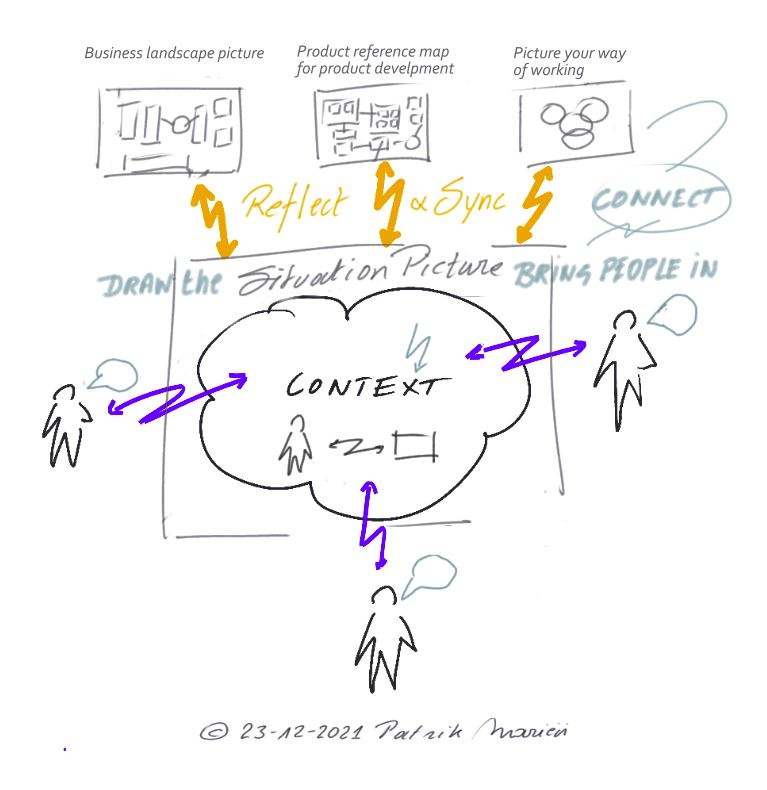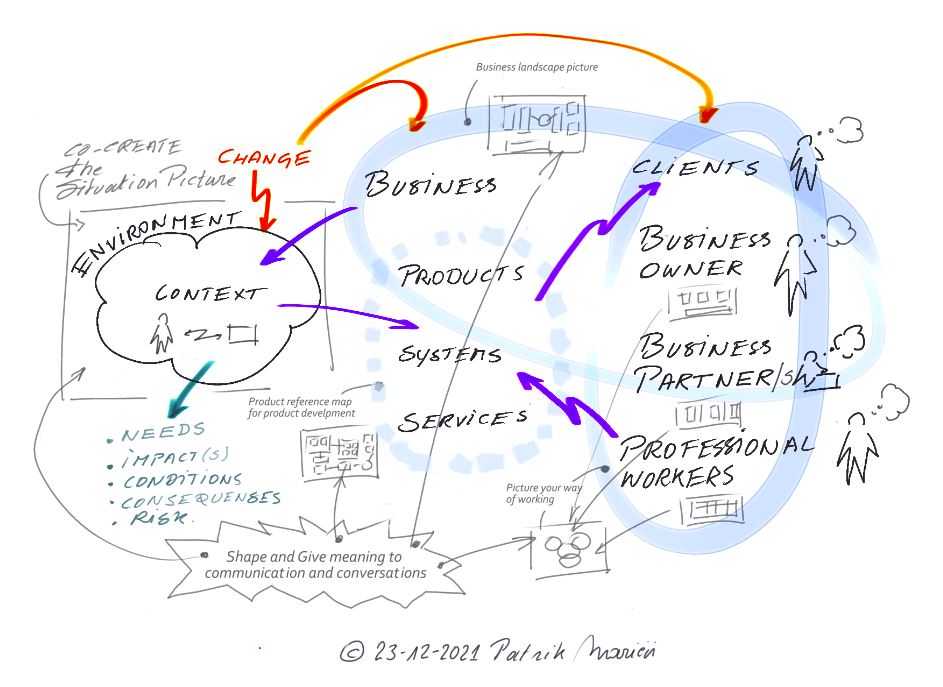The lack of collaboration between technical and commercial professionals is a common stumbling block in the business world. It can arise from a lack of involvement, disinterest, or simply a lack of trust. The result of this is that there are frequent misjudgments in terms of strategy, budgeting, planning, and capitalizing on opportunities. This occurs when professionals, who are already busy with other tasks, are asked to provide input in areas where they have insufficient insight.
To address these problems and promote effective communication, it is crucial to utilize visualizations that enable the company to communicate quickly and clearly with customers, employees, and partners. These visualizations serve as reference points during both in-person and virtual conversations and help evaluate the situational and system images discussed during these conversations [*]. In this way, reference models contribute to a better understanding within the entire business context
[*] The situation and system drawing is a co-creation of people with different mindsets and backgrounds that places expectations in a context with clear impact.
To achieve this, there are three models specifically tailored to your company that are invaluable:

- The Business Landscape: This model provides an overview of the playing field in which your company operates and why. It includes the relevant elements within the business system, such as vision & mission, different business domains, technologies, and partners, including their relationships and characteristics. By using this model, employees can better understand how different aspects of the company are interconnected.
- The Product Reference Map for Product Development: This model provides a visual representation of both existing and future products, including their functionality and their relationship with services and other systems. By utilizing this visual reference, employees can understand the complexity of product development and better assess how new products can be integrated into the existing infrastructure.
- The working method: This visualization demonstrates the company’s own working framework and how it can seamlessly align with others to form a common framework. This model offers a clear insight into the company’s working method and how different teams can collaborate to achieve shared goals. It promotes a culture of transparency and efficient communication.
To ensure effective understanding of these management tools, make the visualization very simple. Those involved should require a maximum of 3 minutes of explanation, as well as a maximum of 30 seconds to regain the overview.
These three models are invaluable because they prevent organizations from getting lost in ambiguous communication. They also aid in aligning activities and priorities with expectations, contributing to making better decisions and assessments. With these models, the company has a solid foundation to build upon. They provide new employees with a clear reference point to align their work, enabling them to quickly understand the business landscape, product development, and the work method. In this way, they can effectively integrate and add value from the beginning, without the risk of new employees causing a breach of knowledge in growth processes.
It is important that these visualizations are always available and accessible anywhere so that they can be easily consulted when preparing for and conducting interactions. They provide guidance in capturing and documenting agreements made and enable continuous communication with a focus on both the technical and commercial perspective, considering potential future developments.

By using these three visual anchors, you create an image of openness for your company and foster trust with professional employees and your network. This enables them to gain sufficient insight when questioned about specific situations, reducing misjudgments in strategy, budgeting, and planning. With a solid foundation of effective communication and collaboration, companies can successfully evolve and thrive in the ever-changing business environment
To successfully develop and apply these models, guidance and inspiration are invaluable. It’s “systems thinking” in practice, and it requires some experience to get it right from the start. I’m ready to support you in creating the visuals with the right format and structure, and to provide you with valuable advice and inspiration for effective implementation. Ultimately, you’ll be able to further develop and maintain the models yourself, making them an indispensable tool within your company.
